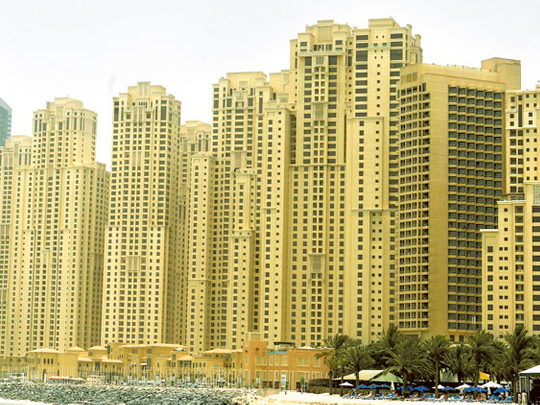
Dubai: Property investors eyeing golden investment opportunities in Mena for 2013 should bank on residential assets, specifically buildings and compounds.
According to a recent report by Jones Lang LaSalle, the residential sector is most in demand in Mena, mainly by private investors that dominate the Middle East market. Investment activity and prices in the residential segment have been up in the past 12 to 18 months. The total residential transactions for 2012 totaled to Dh10.3 billion, up 49 per cent from Dh6.9 billion for the corresponding time a year ago, read a recent CBRE report.
Ziad Al Chaar, Managing Director, DAMAC Properties, said Dubai will see sustainable growth in the real estate market in 2013 if buyers know where to place their investments.
“2012 has delivered on our predictions at the start of the year — prices in the Dubai market steadily grew with each quarter outperforming the last. In 2013, buyers will definitely be able to benefit from this capital growth, but will need to be very savvy about where they invest and in which projects in each area,” he said.
Investors in Mena have showed a preference for buying residential properties. The general trend shows investors are leaning towards the buying of property, not selling, according to the Jones Lang LaSalle report. It stated that 50 per cent of respondents in a recent survey expressed their intent on buying properties and selling non-core assets over the next year. However, 34 per cent said they are only buying properties against the 16 per cent that have opted to sell assets. Sellers are at a disadvantage as there has been a lack of investment opportunities in Mena, the report read.
The positive sentiment is expressed across many residential developments in Mena. But Dubai sits high as the preferred regional market in the last 12 months, the report continued.
The local economy’s rising improvement in the past 12-18 months impacted investors’ decision to map Dubai as an investment destination, according to the report. The Emirates’ economy has seen a GDP growth of around 4.5 per cent in 2012, reeling in investment capital from volatile regional markets, it read.
“Real estate has shown the first solid signs of recovery since 2008, particularly in the Dubai residential market. There has been a good uptake on newly completed stock and prices have strengthened both in sales and rentals but notably in the popular freehold communities such as Emirates Living, Palm Jumeirah, Arabian Ranches and Downtown,” said Helen Tatham, director of residential at Knight Frank, Gulf News reported last month.
These communities, including Dubai Marina and Jumeirah Lakes Towers, made Dh2.74 billion worth of deals accounting for 84 per cent of the total volume for the third quarter of 2012, according to Dubai Land Department statistics mentioned in a recent CBRE report.
But investors are still hesitant about putting their money on incomplete projects, according to the Jones Lang LaSalle report. The preference is for low-risk completed projects that generate a steady income in the long-term. Also, investors are gravitating toward properties with small lot sizes, it stated.
Nonetheless, Dubai’s residential sector is showing positive signs of growth in 2012, with new developments housing residential areas in the works, such as The Mohammad Bin Rashid City, which is part of the emirate’s 2030 vision. The residences will be built using materials that efficiently uses energy, water, and other resources to minimise waste and environmental degradation.
The writer is a trainee at Gulf News.












